Part of the big green space between Downtown Brooklyn and Brooklyn Heights is Walt Whitman Park, but most of it is the 10 acres of Cadman Plaza Park.

On the late April day of my recent visit, part of the park had been transformed into a fairground, though with, at least as yet, only a smattering of revelers.
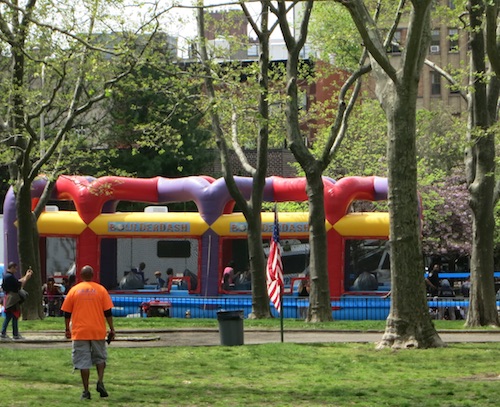
Avoiding the festivities, I didn't get close to the statue of William Jay Gaynor, reformist mayor of New York City from 1910-1913. Next time.
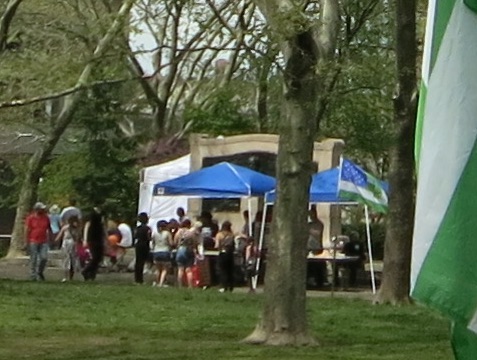
Under a long avenue of plane trees, patchy grass fades into a dirt trail.
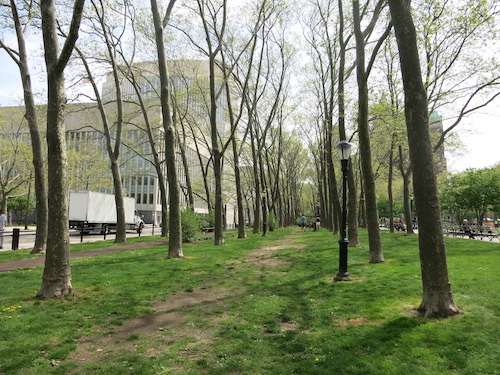
The park's most striking feature is a 24-foot-high memorial designed by sculptor Charles Keck and dedicated in 1952 to the Brooklyn soldiers who fought in World War Two, "especially those who suffered and died. May their sacrifice inspire future generations and lead to universal peace."
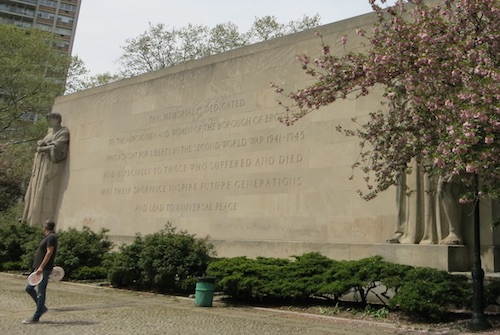
Big dreams.
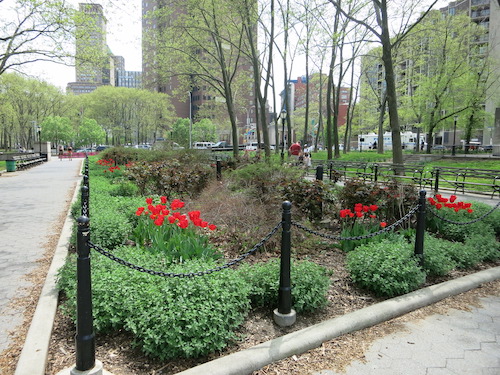
Hard by rises my favorite specimen of the borough's architecture, the Main Brooklyn Post Office, aka Conrad B. Duberstein U.S. Bankruptcy Courthouse – a New York City landmark that's also on the National Register of Historic Places.
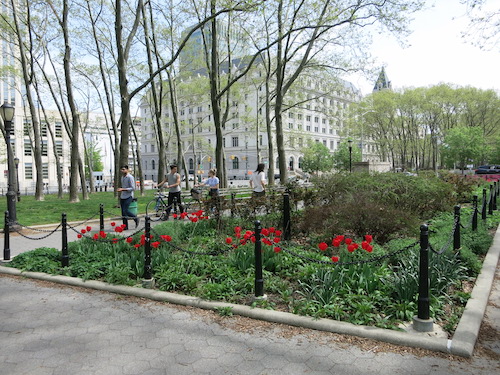
Back in the park, never mind the carnival, there's plenty of room for a soccer pitch too.
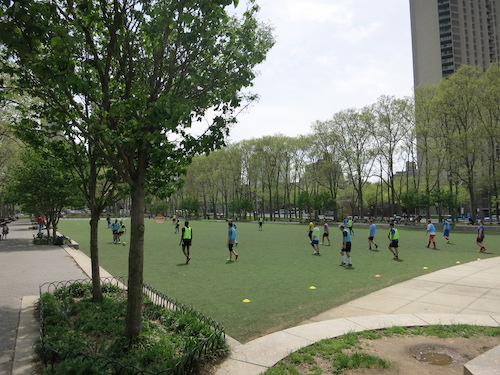
So who was Cadman? I lived in Brooklyn for 14 years and never knew. Well, Samuel Parkes Cadman (1864-1936), born a Shropshire lad, was a Brooklyn Congregational minister, radio preacher, newspaper columnist, author, president of the Federal Council of the Churches of Christ in America, and co-founder of the National Conference of Christians and Jews (now the National Conference for Community and Justice) which arose during the heyday of the KKK to oppose antisemitism, anti-Catholicism, and racial intolerance. In other words, aiming for – here it is again – universal peace. I remember the NCCJ's public service announcements – or were they requests for contributions? – on TV when I was a kid.
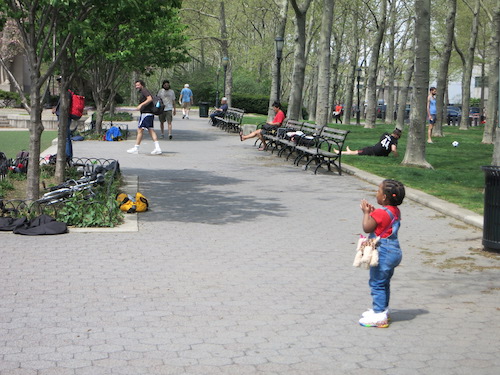
No comments:
Post a Comment